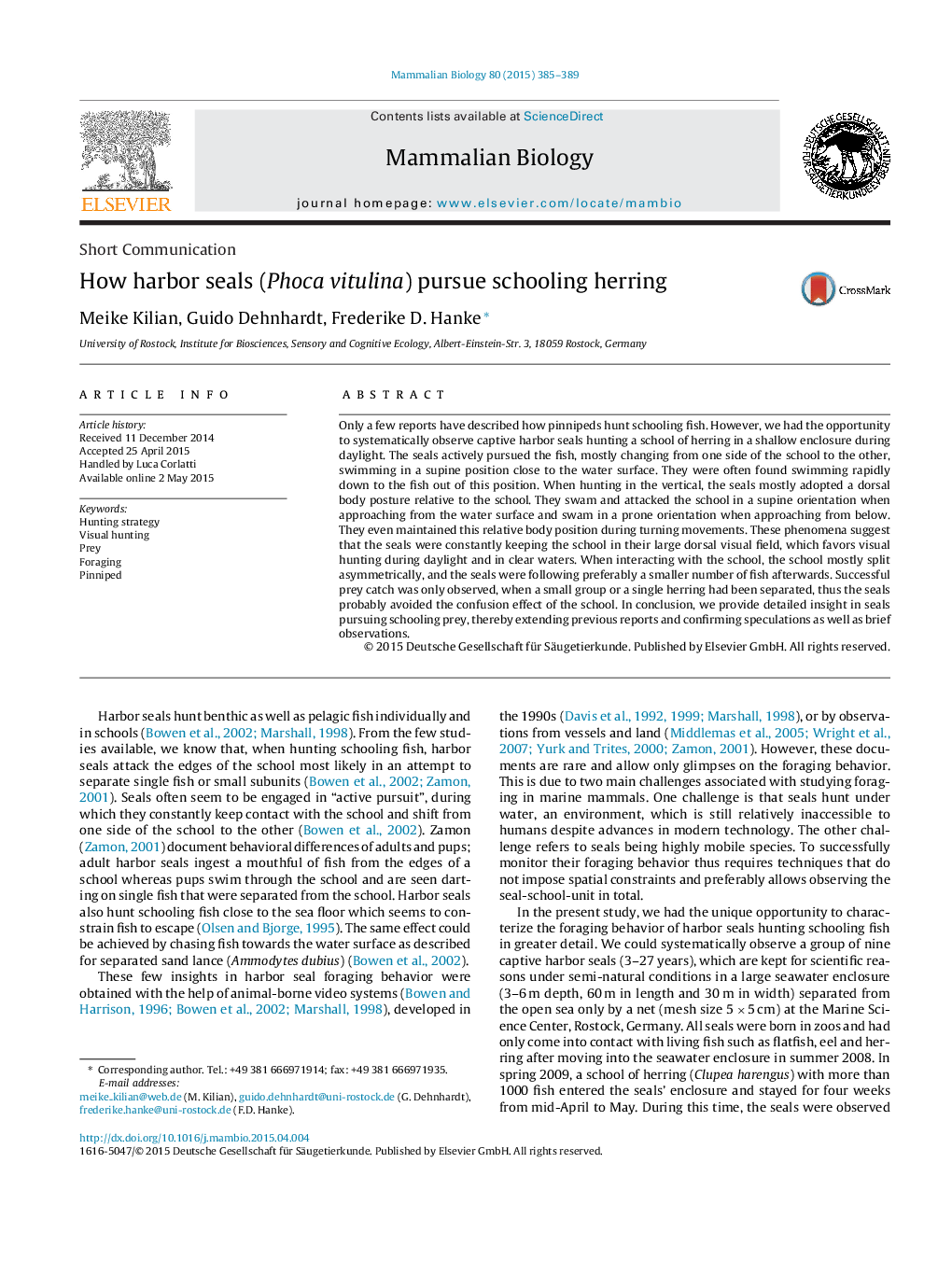| Article ID | Journal | Published Year | Pages | File Type |
|---|---|---|---|---|
| 10955845 | Mammalian Biology - Zeitschrift für Säugetierkunde | 2015 | 5 Pages |
Abstract
Only a few reports have described how pinnipeds hunt schooling fish. However, we had the opportunity to systematically observe captive harbor seals hunting a school of herring in a shallow enclosure during daylight. The seals actively pursued the fish, mostly changing from one side of the school to the other, swimming in a supine position close to the water surface. They were often found swimming rapidly down to the fish out of this position. When hunting in the vertical, the seals mostly adopted a dorsal body posture relative to the school. They swam and attacked the school in a supine orientation when approaching from the water surface and swam in a prone orientation when approaching from below. They even maintained this relative body position during turning movements. These phenomena suggest that the seals were constantly keeping the school in their large dorsal visual field, which favors visual hunting during daylight and in clear waters. When interacting with the school, the school mostly split asymmetrically, and the seals were following preferably a smaller number of fish afterwards. Successful prey catch was only observed, when a small group or a single herring had been separated, thus the seals probably avoided the confusion effect of the school. In conclusion, we provide detailed insight in seals pursuing schooling prey, thereby extending previous reports and confirming speculations as well as brief observations.
Related Topics
Life Sciences
Agricultural and Biological Sciences
Animal Science and Zoology
Authors
Meike Kilian, Guido Dehnhardt, Frederike D. Hanke,
